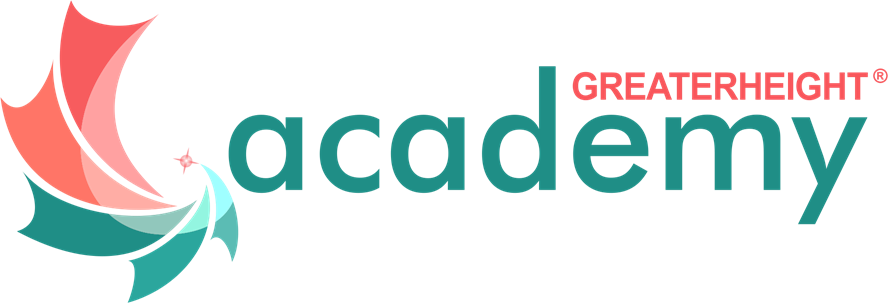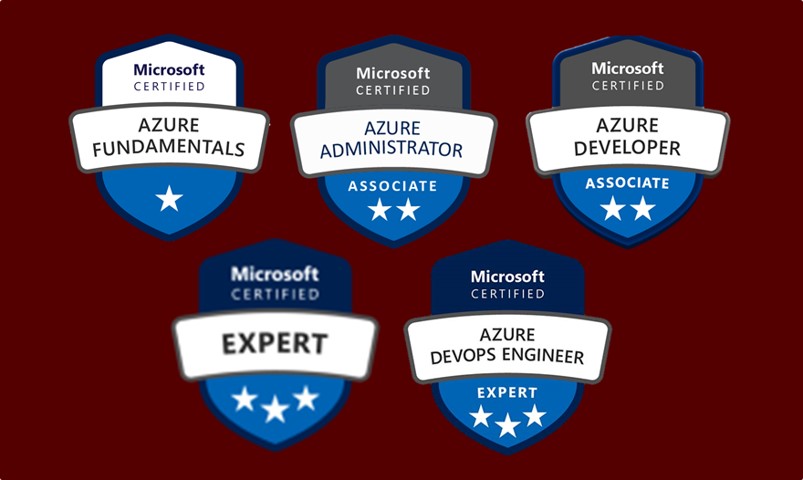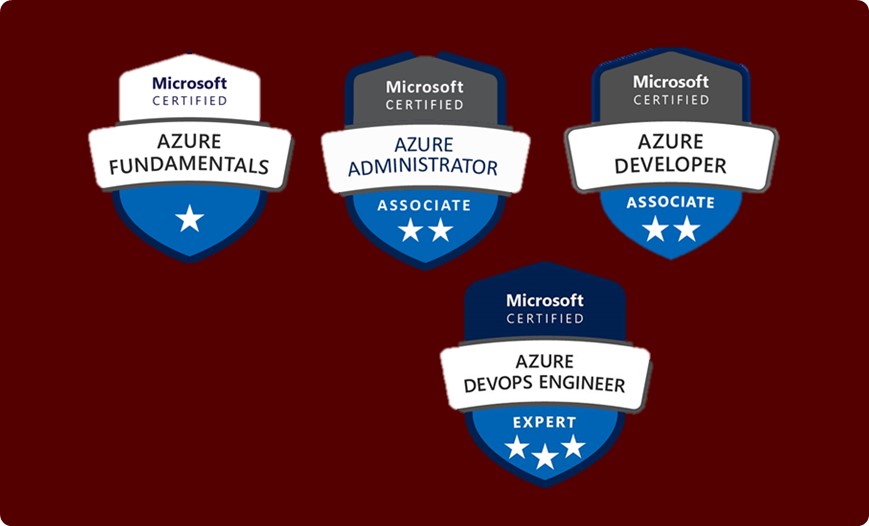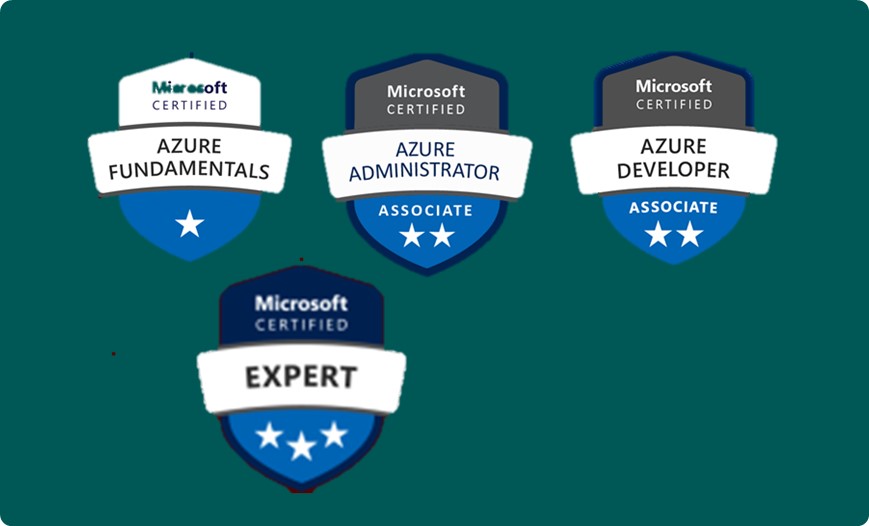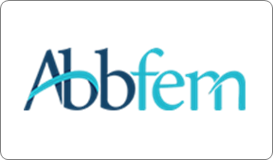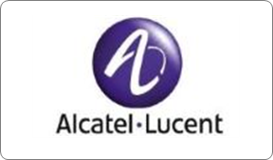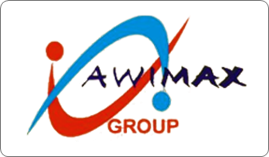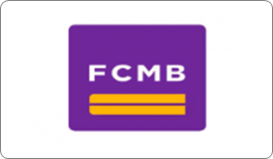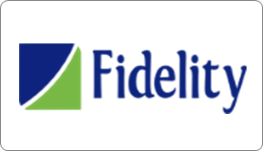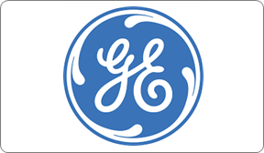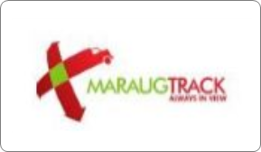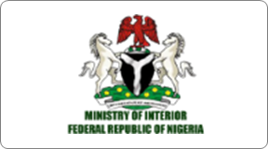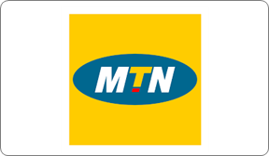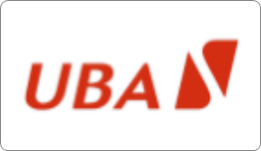Azure Cloud Solutions Architect Master Program
- Microsoft Certified - Azure Fundamentals Certification (AZ 900)
- Microsoft Certified Azure Administration Certification Training (AZ 104)
- Microsoft Certified Azure Developer Certification Training (AZ 204)
- Microsoft Certified Azure Solution Architect Expert Training (AZ 305)

Live Sessions
1 Yr. Membership

Skill Level
Beginner - Advanced

Career Coaching
Weekly Session

Course Durations
5 Months

Assignment
24+ Hours
Instructor-led Live Online Classes
Our learn-by-building-project method enables you to build practical or coding experience that sticks. 95% of our learners say they have confidence and remember more when they learn by building real world projects which is required to work in your real life.
- Get step-by-step guidance to practice your skills without getting stuck
- Validate your technical problem-solving skills in a real environment
- Troubleshoot complex scenarios to practice what you learned
- Develop production experience that translates into real-world
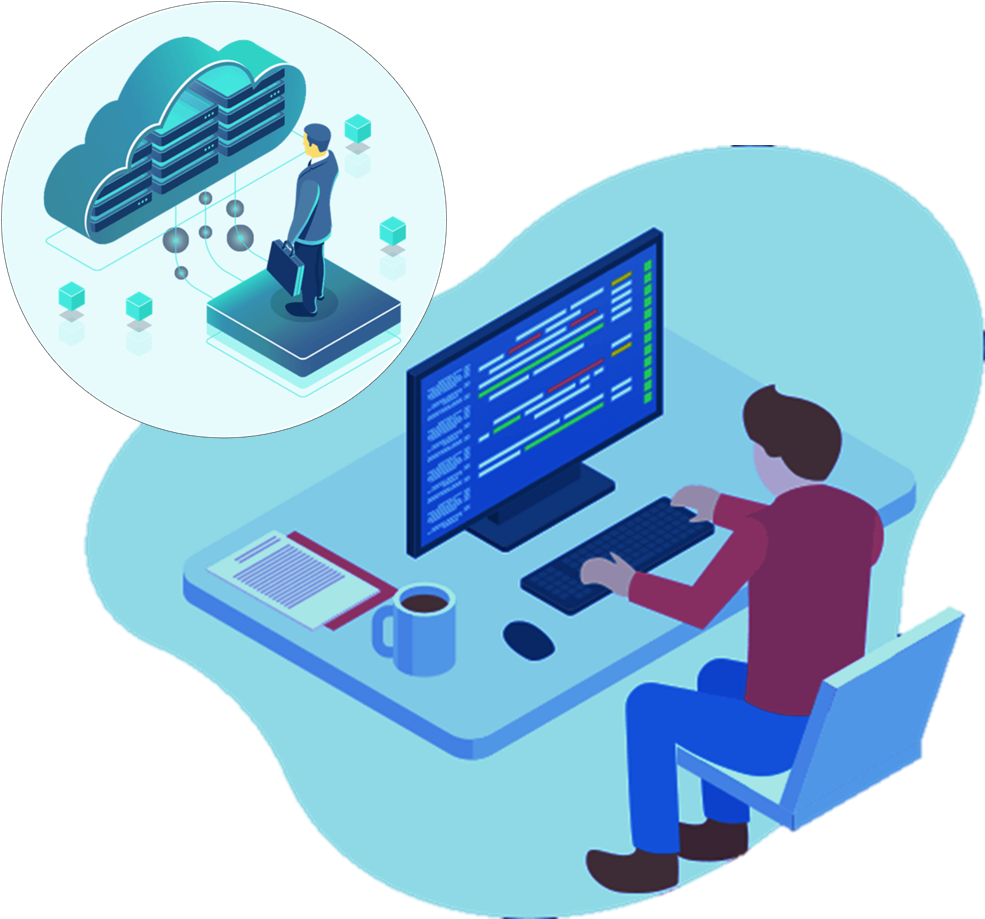
Microsoft Azure Related Courses
Why Learn Azure?
OPPORTUNITY
Public cloud spending alone will grow to $522B in next few years.
SALARY TRENDS
The average salary of Azure administrator is $105k (based on Indeed.com salary data).
PERFORMANCE
More than 83% websites will be cloud based within the next three years - Cisco.
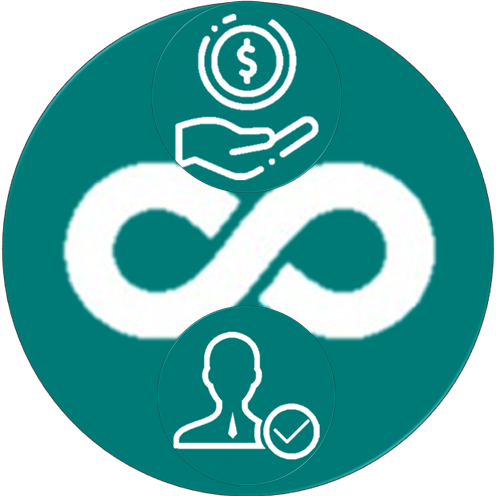
SECURED FUTURE
By 2026, 90% of enterprises will use both the IaaS and PaaS capabilities from cloud provider.
USED BY INDUSTRIES
3M, Heineken, NBC Sports, Citrix, UST Global, Mindtree, TCS, Wipro, Infosys & many MNC's worldwide use Azure across industries.
About The Program
GreaterHeight's Microsoft Azure Cloud Solutions Architect Master’s Program will prepare you for four certification exams: AZ-900, which is required to attain Azure Fundamentals Badge (Fundamental - level), AZ-104, which is required to attain Azure Administrator Badge (Associate- level), AZ-204, which is required to attain Azure Developer Badge (Associate-level), and AZ-305, which is required to attain Azure Solutions Architect Badge (Expert-level). You will be able to implement advanced networking configurations, plan authentication and security of the infrastructure, use PaaS solutions and Storage Services to deploy end-to-end cloud solutions.

List of Courses under Microsoft Azure Cloud Engineer Architect Master’s Program
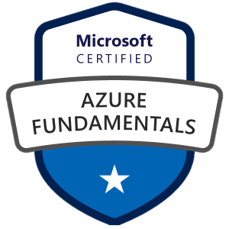
Microsoft Certified - Azure AZ 900 Fundamentals Certification Training
About The Program
The Microsoft Certified Azure Fundamentals Training Program makes you proficient in developing, planning, and scaling your web applications on Microsoft Azure. It includes training on core Azure services; core solutions and management tools on Azure; general security and network security features; identity, governance, privacy, and compliance features; and Azure cost management and Service Level Agreements.
The curriculum has been designed to earn Microsoft Azure Fundamentals Certification (AZ-900). You can check the examination details and certification cost at Azure Fundamentals AZ-900
Microsoft Azure Fundamentals Course Contents
New to the cloud? Azure fundamentals is a six-part series that teaches you basic cloud concepts, provides a streamlined overview of many Azure services, and guides you with hands-on exercises to deploy your very first services for free.
After completing this learning path, you'll be able to:
- Understand the benefits of cloud computing in Azure and how it can save you time and money
- Explain cloud concepts such as high availability, scalability, elasticity, agility, and disaster recovery
- Describe core Azure architecture components such as subscriptions, management groups, resources and resource groups
- Summarize geographic distribution concepts such as Azure regions, region pairs, and availability zones.
01. Introduction
02. What is cloud computing?
03. What is Azure?
04. Tour of Azure services
05. Get started with Azure accounts
06. Case study introduction
07. Knowledge check
08. Summary
01. Introduction
02. Discuss different types of cloud models
03. Describe cloud benefits and considerations
04. Describe different cloud services
05. Knowledge check
06. Summary
01. Introduction
02. Overview of Azure subscriptions, management groups, and resources
03. Azure regions, availability zones, and region pairs
04. Azure resources and Azure Resource Manager
05. Azure subscriptions and management groups
06. Knowledge check
07. Summary
- Understand the breadth of services available in Azure including compute, network, storage, and database
- Identify virtualization services such as Azure Virtual Machines, Azure Container Instances, Azure Kubernetes Service, and Azure Virtual Desktop
- Compare Azure's database services such as Azure Cosmos DB, Azure SQL, Azure Database for MySQL, Azure Database for PostgreSQL, and Azure's big data and analysis services
- Examine Azure networking resources such as Virtual Networks, VPN Gateways, and Azure ExpressRoute
- Summarize Azure storage services such Azure Blob Storage, Azure Disk Storage, and Azure File Storage
01. Introduction
02. Overview of Azure compute services
03. Decide when to use Azure Virtual Machines
04. Decide when to use Azure App Service
05. Decide when to use Azure Container Instances or Azure Kubernetes Service
06. Decide when to use Azure Functions
07. Decide when to use Azure Virtual Desktop
08. Knowledge check
09. Summary
01. Introduction
02. Azure Virtual Network fundamentals
03. Azure Virtual Network settings
04. Azure VPN Gateway fundamentals
05. Azure ExpressRoute fundamentals
06. Knowledge check
07. Summary
01. Introduction
02. Azure Storage account fundamentals
03. Disk storage fundamentals
04. Azure Blob storage fundamentals
05. Azure Files fundamentals
06. Understand Blob access tiers
07. Knowledge check
08. Summary
01. Introduction
02. Explore Azure Cosmos DB
03. Explore Azure SQL Database
04. Exercise - Create a SQL database
05. Explore Azure database for MySQL
06. Explore Azure Database for PostgreSQL
07. Explore Azure SQL Managed Instance
08. Explore big data and analytics
09. Knowledge check
10. Summary
- Create a Virtual Machine in the portal
- Create a Web App
- Deploy Azure Container Instances
- Create a Virtual Network
- Create Blob Storage
- Create a SQL Database
By the end of this learning path, you'll be able to:
- Choose the correct Azure Artificial Intelligence service to address different kinds of business challenges.
- Choose the best software development process tools and services for a given business scenario.
- Choose the correct cloud monitoring service to address different kinds of business challenges.
- Choose the correct Azure management tool to address different kinds of technical needs and challenges.
- Choose the right serverless computing technology for your business scenario.
- Choose the best Azure IoT service for a given business scenario.
01. Introduction
02. Identify the product options
03. Analyze the decision criteria
04. Use IoT Hub
05. Use IoT Central
06. Use Azure Sphere
07. Knowledge check
08. Summary
01. Introduction
02. Identify the product options
03. Analyze the decision criteria
04. Use Machine Learning for decision support systems
04. Use Cognitive Services for data analysis
05. Use Bot Service for interactive chat experiences
06. Knowledge check
07. Summary
01. Introduction
02. Identify the product options
03. Analyze the decision criteria
04. Use Azure Functions
05. Use Azure Logic Apps
06. Knowledge check
07. Summary
01. Introduction
02. Understand your product options
03. Analyze the decision criteria
04. Use Azure DevOps to manage the application development lifecycle
05. Use GitHub to contribute to open-source software
06. Use Azure DevTest Labs to manage testing environments
07. Knowledge check
08. Summary
01. Introduction
02. Identify the product options
03. Analyze the decision criteria
04. Use the Azure portal to visually understand and manage your cloud environment
05. Use Azure PowerShell for one-off administrative tasks
06. Use the Azure CLI for one-off administrative tasks
07. Use the Azure mobile app to manage Azure on the g
08. Use ARM templates to deploy an entire cloud infrastructure
09. Knowledge check
10. Summary
01. Introduction
02. Identify your product options
03. Analyze the decision criteria
04. Use Azure Advisor
05. Use Azure Monitor
06. Use Azure Service Health
07. Knowledge check
08. Summary
- Implement an Azure IoT Hub
- Implement Azure Functions
- Create a VM with a Template
- Create a VM with PowerShell
- Create a VM with the CLI
01. Introduction
02. Protect against security threats by using Azure Security Center
03. Detect and respond to security threats by using Azure Sentinel
04. Store and manage secrets by using Azure Key Vault
05. Exercise - Manage a password in Azure Key Vault
06. Host your Azure virtual machines on dedicated physical servers by using Azure Dedicated Host
07. Knowledge check
08. Summary
01. Introduction
02. What is defense in depth?
03. Protect virtual networks by using Azure Firewall
04. Protect from DDoS attacks by using Azure DDoS Protection
05. Filter network traffic by using network security groups
06. Exercise - Configure network access to a VM by using a network security group
07. Combine Azure services to create a complete network security solution
08. Knowledge check
09. Summary
- Secure Network Traffic
- Implement Azure Key Vault
01. Introduction
02. Compare authentication and authorization
03. What is Azure Active Directory?
04. What are multifactor authentication and Conditional Access?
05. Knowledge check
06. Summary
01. Introduction
02. Control access to cloud resources by using Azure role-based access control
03. Prevent accidental changes by using resource locks
04. Exercise - Protect a storage account from accidental deletion by using a resource lock
05. Organize your Azure resources by using tags
06. Control and audit your resources by using Azure Policy
07. Exercise - Restrict deployments to a specific location by using Azure Policy
08. Govern multiple subscriptions by using Azure Blueprints
09. Accelerate your cloud adoption journey by using the Cloud Adoption Framework for Azure
10. Create a subscription governance strategy
11. Knowledge check
12. Summary
01. Introduction
02. Explore compliance terms and requirements
03. Access the Microsoft Privacy Statement, the Online Services Terms, and the Data Protection Addendum
04. Explore the Trust Center
05. Access Azure compliance documentation
06. What is Azure Government?
07. What is Azure China 21Vianet?
08. Knowledge check
09. Summary
- Manage access with RBAC
- Manage resource locks
- Implement resource tagging
- Create an Azure Policy
- Explore the Trust Center
As you move to the cloud, you might ask:
- How much will it cost?
- What guarantees does Azure provide around uptime and connectivity?
- How do preview services impact my production applications?
01. Introduction
02. Compare costs by using the Total Cost of Ownership Calculator
03. Exercise - Compare sample workload costs by using the TCO Calculator
04. Purchase Azure services
05. Exercise - Estimate workload cost by using the Pricing calculator
06. Manage and minimize total cost on Azure
07. Knowledge check
08. Summary
01. Introduction
02. What are service-level agreements (SLAs)?
03. Define your application SLA
04. Design your application to meet your SLA
05. Access preview services and preview features
06. Knowledge check
07. Summary
- Use The Azure Pricing Calculator
- Use the Azure TCO Calculator
- Open A Support Request
- Calculate Composite SLAs
- Access Azure Preview features
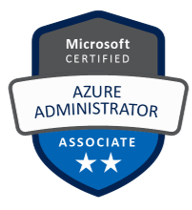
Microsoft Certified - Azure AZ 104 Administrator Associate Certification Training
About The Program
The Mastering Microsoft Azure Administrator Associate Program makes you expert in optimizing workloads, managing, and implementing virtual networks in Azure and explore IaaS architecture, services, tools, and creating and managing Azure Active Directory using real-life case studies. The curriculum has been designed to earn Microsoft Azure Administrator Associate (AZ-104). You can check the examination details and certification cost at AZ-104 Administrator Exam
Azure Administrator Associate (AZ-104) training is designed to help you prepare for the Microsoft Certified: Azure Administrator Associate certification exam. You will be able to effectively setup, deploy and scale Azure virtual machines; configure and manage storage; secure and monitor the cloud infrastructure through robust implementations; implement advanced virtual networking; and secure identities.
Microsoft Azure Administrator Course Contents
01. Introduction to Cloud Computing
02. Overview of Microsoft Azure
03. Microsoft Azure Services
04. Azure Subscriptions
05. Management Groups
06. Azure Resource Manager
07. Azure Portal and PowerShell
08. Azure Resource Manager Policies
09. Azure Policy Definition Structure
10. Resource Management Locks
11. Organizing Azure Resources
Hands-On
01. Create an Azure account
02. Manage subscriptions, billing, and policies
03. Configure Management Groups
04. Use Portal and PowerShell to deploy and manage resources on Azure
05. Create Azure policies
01. Introduction to Azure Virtual Networks
02. IP Addresses – Public and Private
03. Classless Inter-domain Routing (CIDR)
04. Subnets
05. Network Interface Cards (NICs)
06. Network Security Groups (NSGs)
07. Network Security Group Rules
08. Virtual Network Service Endpoints
09. Service Endpoint Policies
10. Azure Load Balancer
11. Azure DNS
12. Azure Firewall
13. Azure Bastion Service
Hands-On
01. Create and Configure Virtual Networks
02. Setup Network Security Groups (NSGs)
03. Restrict Network Access to Resources with Service Endpoints
04. Implement Azure DNS
05. Configure Azure Firewall
01. Azure Virtual Machines
02. Azure Resource Manager VM
03. Introduction to ARM Templates
04. Create a Custom Image of Azure VM
05. Create a Managed Image of a Generalized VM
06. Create an Image from VM Snapshots
07. Creating a Linux Virtual Machine
08. Virtual Machine Extensions
09. Configuration Management using PowerShell DSC
10. Run Custom Scripts using Custom Script Extension
Hands-On
01. Create Windows VMs in the Azure Portal
02. Create Windows VMs with Azure PowerShell
03. Create VMs using ARM Templates
04. Deploy custom server images
05. Configure Azure Kubernetes Service (AKS)
01. Azure Storage
02. Azure Storage Replication
03. Azure Storage Explorer
04. Attach or Detach an External Storage Account
05. Shared Access Signatures (SAS)
06. Attach a Storage Account using SAS
07. Azure Blob Storage
08. Azure File Storage
09. Azure Queue Storage
10. Azure Table Storage
Hands-On
01. Create Azure Storage accounts
02. Manage storage using Azure Storage Explorer
03. Copy data by using AZ-Copy
04. Secure storage using SAS
05. Implement Blobs and Files storages
06. Implement Table storage
01. Azure Backup
02. Why Use Azure Backup?
03. Files and Folder Backup
04. Application Backup
05. Azure File Share
06. Azure File Sync
07. Content Delivery Network (CDN)
08. How CDN Works?
09. Azure Import/Export Service
10. Azure Data Box
Hands-On
01. Implement Azure Backup service
02. Create an Azure File Share
03. Implement Azure File Sync
04. Store and access data using Azure CDN service
05. Transfer data using Azure Import/Export service
01. Azure Virtual Machine Storage
02. Azure Virtual Machine Availability
03. Fault and Update Domains
04. Azure Load Balancer
05. Automatic Scaling of Azure VMs
06. VM Scale Sets
07. Azure VM Backup
08. Azure VM Monitoring with Azure Diagnostics
09. Extension
10. Azure Advisor
Hands-On
01. Attach a Managed Data Disk to a Windows VM
02. Initialize a New Data Disk
03. Configure Azure Load Balancer
04. Create a VM Scale Set
05. Implement Backup and Restor
e 06. Enable Diagnostic Extension to Monitor Metrics and Logs
01. Azure Traffic Manager
02. Azure Application Gateway
03. Azure Virtual Network Routing
04. Azure Virtual Network Connectivity
05. Azure VPN Gateway
06. BGP with VPN Gateway
07. Virtual Network Peering
Hands-On
01. Implement Azure Traffic Manager
02. Configure Virtual Network Gateways
03. Configure BGP with Azure VPN Gateway
04. Implement Virtual Network Peering
01. Azure Inter-site VPN Connectivity Methods
02. Site-to-Site VPN Gateway Connection
03. Point-to-Site VPN Gateway Connection
04. VNet-to-VNet Connections
05. Azure ExpressRoute
06. Azure Virtual WAN
07. Azure Network Watcher
08. Resource Troubleshooting in Azure Network Watcher
Hands-On
01. Create and Configure Point-to-Site Connection
02. Configure Vnet-to-Vnet Connection
03. Configure Azure ExpressRoute
04. Configure Azure Virtual WAN
05. Implement Network Watcher
01. 01. Overview of Role Based Access Control
02. Azure Monitor
03. Log Analytics
04. Azure Activity Log
05. Alerts in Azure Monitor
06. Custom roles in Azure
07. Provide access to Azure resources by assigning roles
08. Manage multiple directories
Hands-On
01. Manage Access using RBAC
02. Grant Access for a Group using RBAC
03. Configure Activity Log Alerts
04. Create a custom role
01. Identity Access Management
02. Azure Active Directory
03. Multi Factor Authentication
04. Self-Service Password Reset
05. Azure AD Identity Protection
06. Azure AD Conditional Access
07. Azure AD Domains and Tenants
08. Azure AD Domain Services
09. Azure AD Join
10. Azure AD Single Sign-On
11. Manage Azure AD Objects
Hands-On
01. Configure Self-Service Password Reset
02. Implement Azure AD Identity Protection
03. Configure Domains and Tenants, Users and Groups
04. Enable Azure AD Domain Services
01. Hybrid Identity
02. Password Hash Synchronization (PHS)
03. Pass-through Authentication (PTA)
04. Federated Authentication
05. Azure AD Seamless Single Sign-On (SSO)
06. Azure AD Application Proxy
07. Password Writeback
Hands-On
01. Implement Password Hash Synchronization and Pass-through Authentication
02. Implement App Proxy and Password Writeback
03. Configure user accounts for Multi-Factor Authentication

Microsoft Certified - Azure AZ 204 Developer Associate Certification Training
About The Program
The Mastering Microsoft Azure Certification Training makes you proficient in developing, planning, and scaling your web applications on Microsoft Azure. It includes training on Azure App Services, Azure Storage, Azure Virtual Machines, Azure SQL Database, Microservices, Azure AD, Azure Automation and DevOps using real-life case studies. The curriculum has been designed by Microsoft MVPs & Industry expert to earn Microsoft Azure Developer Associate Certification (AZ-204).
Microsoft Azure Developer Associate (AZ-204) course is designed to help you prepare for the Exam AZ-204: Developing Solutions for Microsoft Azure, which is required to attain the Azure Developer Badge (Associate-level). You will be able to demonstrate comprehensive knowledge of Azure development using IaaS, PaaS solutions, and related Storage, Security, and Integration Services.
Microsoft Azure AZ-204 Developer Course Contents
01. Overview of Microsoft Azure
02. Azure Virtual Machines
03. Configure Azure VMs for remote access
04. Using Azure SDKs
Hands-On Lab
01. Provision VMs by using the Azure Portal, PowerShell, and code
01. ARM templates for Azure Virtual Machines
02. Azure Disk Encryption
03. Azure Batch Services
Hands-On Lab
01. Deploy ARM templates for VM
02. Run a batch job by using Azure CLI, Azure portal and Code
01. Overview of Azure Kubernetes Service (AKS)
02. AKS clusters
03. Azure Container Registry
Hands-On Lab
01. Create an Azure Managed Kubernetes Service (AKS) cluster
02. Create container images for solutions
03. Publish an image to the Azure Container Registry
04. Run containers by using Azure Container Instance or AKS
01. Azure App Service core concepts
02. Azure App Service Web Apps
03. WebJobs
04. Azure App Service Mobile Apps
05. Registering apps for Push notifications
Hands-On Lab
01. Creating App Service web apps by using Azure CLI, Azure Portal, and PowerShell
02. Creating continuous and triggered Web Jobs
03. Pushing an app on to the Mobile App service
04. Registering apps for push notifications
01. Azure App Service API Apps
02. API documentation
03. Azure Functions overview
04. Durable functions
Hands-On Lab
01. Creating an APIM instance and a new API
02. Use Swashbuckle to create Swagger objects in ASP.NET Core
03. Creating functions, bindings, and triggers
04. Creating Durable functions
01. Azure Table storage overview
02. Authorization in Table storage
03. Table service REST API
04. Azure Cosmos DB overview
05. Managing containers and items
06. Handle documents
07. Scaling
08. Implement server-side programming
Hands-On Lab
01. Perform Shared Key Authorization
02. Use the Azure Table storage REST service to manage data
03. Create, read, update, and delete data by using appropriate APIs
04. Creating and updating documents by using code
01. Azure SQL overview
02. Database operations (CRUD)
03. Azure Blob storage overview
04. Working with Azure Blob storage
05. Blob Leasing in Azure
06. Hot Storage
07. Cool Storage
08. Archive Storage
Hands-On Lab
01. Create, read, update, and delete database tables by using code
02. Set and retrieve Blob storage properties and metadata
03. Replicate and copy Blobs
04. Implement Blob Leasing on Portal
01. Microsoft identity platform
02. OAuth2 authentication
03. Managed Identities
04. Azure Key Vault
05. Claims-based authorization
06. Role-based access control (RBAC) authorization
Hands-On Lab
01. Implementing OAuth2 authentication in the solutions
02. Using Azure Key Vault to store and retrieve authentication information
03. Implementing multi-factor authentication
04. Implementing Claims-based authorization
05. Manage access to resources using RBAC through the REST API
01. Encryption options
02. End-to-end encryption
03. Azure confidential computing
04. Managing cryptographic keys in Azure Key Vault
05. Azure Cache for Redis
06. Develop for storage on CDNs
Hands-On Lab
01. Encrypting data with Transparent Data Encryption
02. Managing and utilizing encryption keys by using the Azure key Vault
03. Configuring and interacting with Azure Redis Cache
04. Managing Azure CDN
01. Overview of Azure Monitor
02. Application Insights
03. Autoscale patterns and best practices
04. Handling transient faults
Hands-On Lab
01. Adding default code to web pages, console apps, and Windows desktop apps to support telemetry
02. Using dashboards and other tools to monitor and troubleshoot their app
03. Implementing Autoscale
04. Implementing code that addresses singleton application instances
05. Implementing code that handles transient faults
01. Azure Logic Apps overview
02. Custom connectors for Logic Apps
03. Custom templates for Logic Apps
04. Azure Search service
05. Introduction to the API Management service
06. Secure APIs
07. Define API policies
Hands-On Lab
01. Creating Logic Apps by using Visual Studio
02. Creating an Azure Search index
03. Importing searchable data
04. Querying the Azure Search index
05. Secure APIs
01. Azure Event Grid
02. Azure Event Hubs
03. Azure Notification Hubs
04. Azure Service Bus
05. Azure Queue Storage queues
Hands-On Lab
01. Create and integrate Event Grid, Event Hubs and Notification Hubs
02. Create and integrate Azure Service Bus
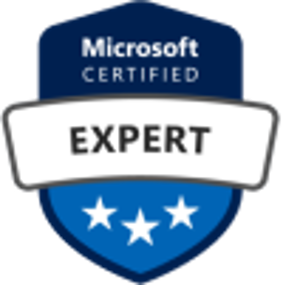
Microsoft Certified Azure Az-305 Solutions Architect Expert Certification training
About The Program
Microsoft Azure Solution Architect [AZ-305] exam is for the Azure Architect role and the Microsoft Certified: Azure Solutions Architect Certification. This exam measures your ability to accomplish the following technical tasks: Design for Identity and Security, Design Monitoring, design a Business Continuity Strategy, Design Data Storage, and Design an Infrastructure Strategy, Design and Application Architecture.
A Cloud Architect Should possess broad technical knowledge in advanced Networking, Identity Management, Virtualization, etc. and Implement a Governance Plan those accounts for the full scope of your company’s cloud journey.
An Azure Solution Architect partners with cloud administrators, cloud DBAs, and clients to implement solutions.
Microsoft Azure Solutions Architect Course Contents
01. Azure Subscriptions
02. Azure Resources
03. Azure Free Tier Account
04. Azure Resource Manager
05. Azure Storage
06. Types of Azure Storage
Hands-On
01.Create a free tier Azure account
02. Create a web app service using Azure Portal
03. Create and Deploy ARM templates
04. Manage Azure Storage account using Storage Explorer
05. Manage Azure Cost and Billing Service
01. Azure Resource Manager Virtual Machine
02. Virtual Machines in ARM Template
03. Overview of Azure Virtual Machine
04. Azure Managed Disks
05. Azure Blob Storage
06. Networking in Azure
07. Subnets, NIC, NSG, IP Addresses, DNS
Hands-On
01. Create Windows and LINUX Virtual Machines
02. Create BLOB Storage using Azure Portal
03. Create VM with Storage Account and Managed Disks
04. Configure Azure Virtual Network
01. Resiliency
02. Azure Availability Sets
03. Azure Availability Zone
04. Autoscaling
05. Virtual Machine Scale Set
06. Fault Domain
07. Update Domain
08. Load Balancer
09. Application Gateway
10. Azure Disk Encryption
Hands-On
01. Create a Virtual Machine Scale Set
02. Configure VMSS and add custom usage alerts
03. Configure VM for Redundancy
04. Create Application Gateway
01. Azure App Service Web Apps
02. App Service Security
03. Serverless Computing Concepts
04. Function Apps
05. Azure Event Grid
06. Azure Service Bus
07. Azure App Service Logic App
08. Using Shell Commands to create Web App
09. Background Tasks
10. Swagger tool
Hands-On
01. Create an App Service Plan
02. Create a Web App Instance
03. Use shell commands to create an App Service Web App
04. Create a Continuous WebJob
01. Hybrid Connectivity
02. VNet S2S VPN
03. VNet Peering
04. Service Chaining
05. Azure VPN Gateway
06. Policy Based Gateway
07. Route Based Gateway
08. Swagger tool
09. Gateway Connections
10. Express Route
11. VNet Routing
12. User Defined Route
13. Border Gateway Protocol
Hands-On
01. Create a Virtual Network Gateway
02. Design User Defined Routes
03. Migrate On-Premise Machines to Azure using Azure Site Recovery
01. Azure Architecture Center
02. Cloud design patterns
03. Cache-aside pattern
04. Sharding Pattern
05. Azure SQL DB
06. Azure Elastic Pool
07. Azure Data Lakes
08. Azure Data Factory
09. Azure Cosmos DB
Hands-On
01. Create and Deploy Azure Data Lake
02. Create and Deploy Azure Cosmos DB
01. Application Environment Components
02. Docker
03. DockerFile
04. Docker Image
05. Azure Container Registry
06. Azure Container Instance
07. Orchestration
08. Azure Kubernetes Service
09. Diagnostics Logs
Hands-On
01. Create and Deploy Docker Image from DockerFile
02. Deploy an Application in ACI
03. Deploy an Application in AKS
01. Access Control
02. Role Based Access Control
03. Authentication in applications (certificates, Azure AD, Azure AD Connect, token-based)
04. Multi-Factor Authentication (MFA)
05. Claims-based authorization
06. Role-based access control (RBAC) authorization
07. End-to-end encryption
08. Azure confidential computing
09. SSL and TLS communications
10. Azure Key Vault
11. Configure Fraud alerts
12. Bypass option, trusted IPs
13. Managed Service Identity
14. Service Principal authentication
Hands-On
01. Implement authentication using certificates, Azure AD, Azure AD Connect, and tokens
02. Implement Multi-Factor Authentication (MFA)
03. Implement Claims-based authorization
04. Implement RBAC authorization
05. Implement secure data for end-to-end encryption
06. Implement secure data for implementing SSL and TLS communications.
07. Use Azure Key Vault to manage cryptographic keys
01. Azure Messaging Service
02. Azure Service Bus
03. Azure Events Hub
04. Azure Events Grid
05. Azure Notifications Hub
06. Auto Scale Ruling in Azure
07. Transient Fault Handling
Hands-On
01. Create a Service Bus Queue
02. Deploy Service Bus Topics and Subscriptions
03. Design and Implement Azure Service Bus
04. Enable Auto Scale based on CPU Metrics Or Schedule
05. Implement Multi-Factor Authentication (MFA)
07. Use Azure Key Vault to manage cryptographic keys
01. Azure Monitoring
02. Azure Analytics
03. Azure Alerts
04. Azure Resource Metrics
05. Azure Activity Log
06. Service Health
07. Azure Log Analytics
08. Azure App Insights
Hands-On
01. Create and Deploy Alert Rules for Azure Resources
02. Analyze the data in your metric database
03. Create and Configure Azure Log Analytics
04. Deploy Azure App Insights Service
01. Authorisation and Authentication
02. Authorisation and Authentication Protocols
03. Azure AD B2B B2C
04. Security and Risk Management
05. PIM
06. Licensing & Compliance
07. Understanding Azure Storage
08. Setting Up Azure Storage
09. Designing Storage Access
10. Storage Security and Best Practice
Hands-On
01. OpenID & OAuth2
02. Conditional Access
03. Storage Account Creation and Shared Access Signatures
01. Design Migration & Integration Strategy
02. Understand Data Protection at Different Stages
03. Migration Fundamentals
04. Azure Services for Migration
Hands-On
01. Migration and Access Using Azure Migrate
01. Introduction to Design for Cost Optimization
02. Azure Cost Calculator and Azure Cost Management
03. Minimize Compute Costs
04. Minimize Network Costs
05. Minimize Storage Costs
06. What should be your Monitoring Strategy
07. What is Compliance
08. What should be the Compliance Strategy
09. Understand the Azure Monitoring Service
10. Azure Application Insights
11. Azure Monitor - Use Cases
12. Achieving Compliance with Azure Policy
13. Azure Sentinel
01. Best Ways to design
02. Site Recovery
03. Replication
04. Backup and Archival
05. Use case: Recommend a solution for site recovery
AZURE SOLUTIONS ARCHITECT EXPERT MASTER PROGRAM
SALARIES & JOBS AVAILABILITY For Azure Solutions Architect Expert Master Program Jobs Pay per Year?
Most Popular Jobs Similar to Azure Solutions Architect Expert Master Program
- Azure Solutions Architect
- Micosoft Azure Solutions Architect
- Azure Developer
- Micosoft Azure Fundamentals
- Azure Data Factory
- Azure Administrator
- Azure Security Engineer
- Azure Architect
- Azure Data Engineer

Most Popular Azure Solutions Architect Expert Master Program Job Categories
- CLoud Architect
- Microsoft Azure DevOps
- Azure Infrastructure Engineer
- Microsoft Azure Fundamentals
- Azure API Management
- Azure Database Administrator
- DevOps Engineer Expert
- Architect Technology
- Azure Sales
GreaterHeight Academy Benefits
Unlimited Live Sessions
Live Training Membership give you unlimited access to all our live training and sessions recording from anywhere and using any device staying at home.
Expert-led Live Sessions
All sessions are led by our expert mentors who are well connected to the open-source communities. They explain complex technical concepts in an easy way.
Test and Quizzes
Each Module will be followed by mock-up tests and quizzes which help you to monitor your learning progress and evaluate yourself.
Build Real-Projects
All the sessions are delivered using real-life. You will learn how to build real projects using industry recommended principles & practices.
Personal Career Coach
Get career guidance from top experts as your personal coach, align your preparation strategy & learning resources to achieve your goal.
Interview Prep Sessions
Get career guidance and ask your questions & doubts live. Join to prepare yourself for next job interview to crack and get hired!
Resume Building
Optimize your resume with the help of our experienced experts to get your desired jobs.
Hands-on Assignments
Learn by doing hands-on to gain confidence to solve real-world challenges and assignments. Interview Prep Sessions.
Discord Community Accessh
Get access to Discord community to discuss doubts, access assignments and learning with peer interaction.
Technical Support
We have online support team available to help you with any technical queries you may have during the course.
Get Certified
Master in-demand job skills to become a technology expert, get certified, and accelerate your career.
Microsoft Azure Cloud Soulutions Architect Master Online Training Projects
Practice Essential
Tools
Designed By Industry
Experts
Get Real-world
Experience
Apply your coding skills to solve real-world problems. You’ll learn how to start a project from scratch by following recommended architecture, practices and deploy to server.
1. Handling Infrastructure Solutions for Azure Cloud.
The project allows the learners to handle infrastructures solutions for the organization’s Azure Cloud. The learners also get hands-on experience with Azure infrastructure architecture and in optimizing the Windows server workload.
2. Monitoring Azure Cloud For a BPO.
The learners get real-world insights into monitoring Azure cloud for BPO. They manage Azure infrastructure for an outsourcing company and configure, deploy and manage storage solutions and work with Azure Virtual Machines.
3. Containerizing Various Frameworks and NGINX Application Using Docker.
Use Docker to successfully integrate the software projects deployed in diverse environments. Get hands-on learning experience in setting up Node.js on Docker containers along with pulling NGINX images from Docker Hub, etc.
Career & Certifications
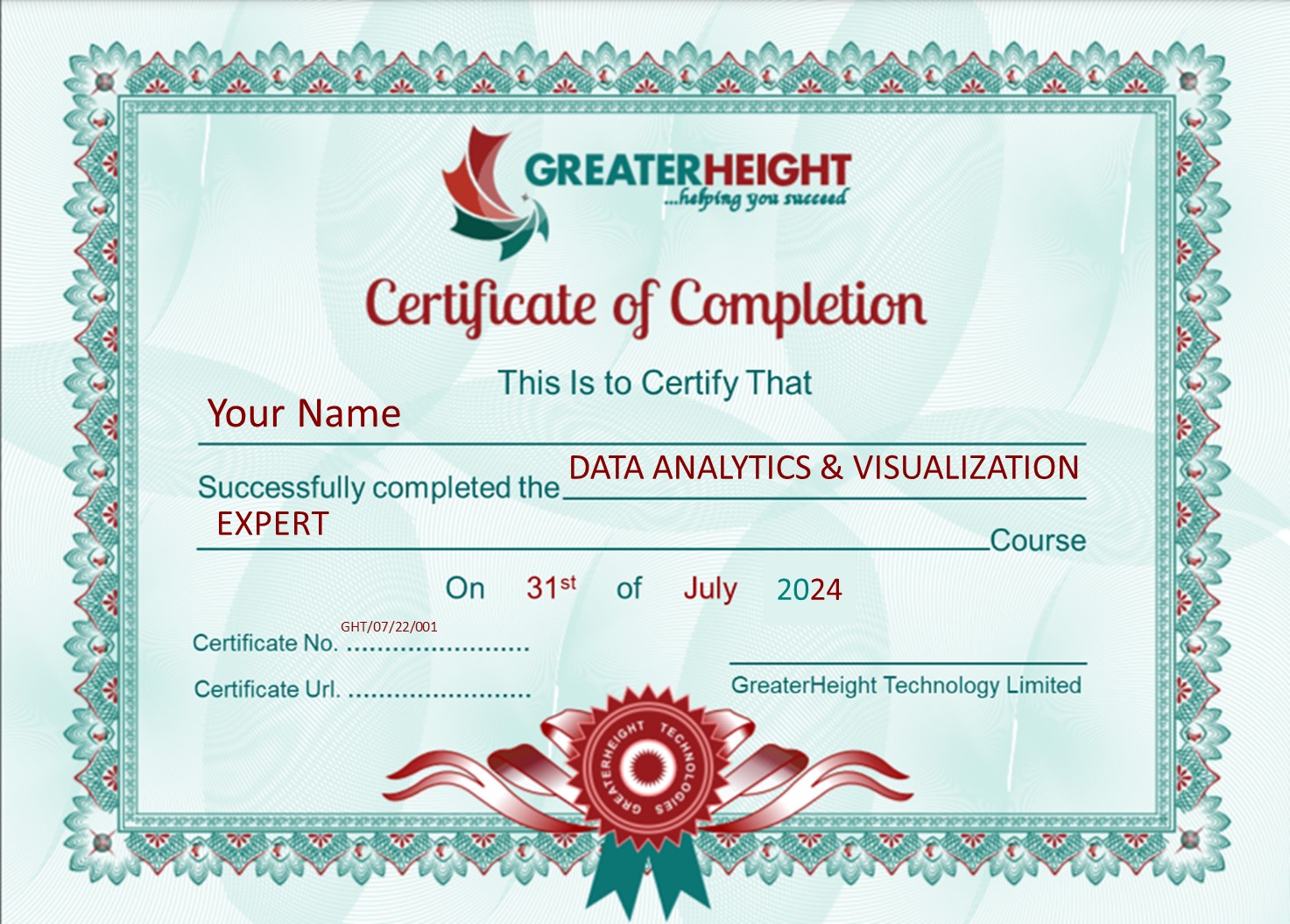
- Integrating On-premises Identity Infrastructure with Microsoft Azure
- Developing Microsoft Azure and Web Services
- Developing Microsoft Azure Solutions
- Exam AZ-900: Microsoft Azure Fundamentals Training
- Exam AZ-104: Microsoft Azure Administrator
- Exam AZ-204: Developing Solutions for Microsoft Azure
- Exam AZ-305: Microsoft Azure Infrastructure Solutions
- Azure DevOps Certification AZ-400 exam
FAQs
You will work on highly exciting projects in the domains of high technology, ecommerce, marketing, sales, networking, banking, insurance, etc. After completing the projects successfully, your skills will be equal to 6 months of rigorous industry experience.

OUR CLIENTS
We Have Worked With Some Amazing Companies Around The World
Our awesome clients we've had the pleasure to work with!
